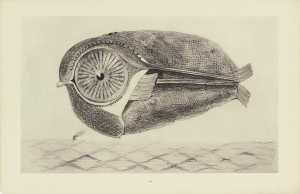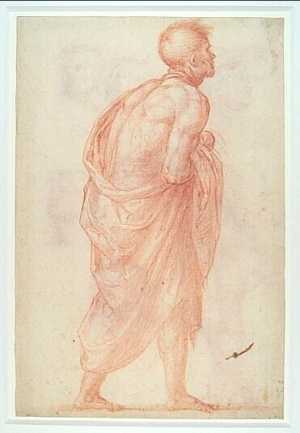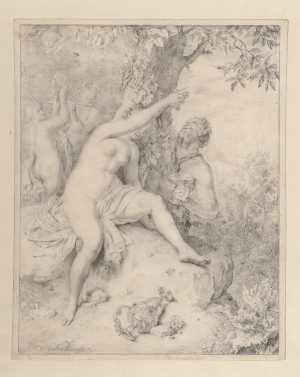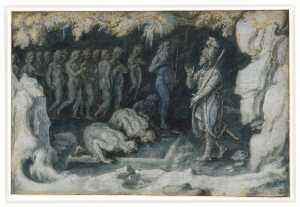Specifications
| Title | Man Walking to the Right |
|---|---|
| Material and technique | Red chalk |
| Object type |
Drawing
> Two-dimensional object
> Art object
|
| Location | This object is in storage |
| Dimensions |
Height 287 mm Width 197 mm |
|---|---|
| Artists |
Draughtsman:
Fra Bartolommeo (Bartolomeo-Domenico di Paolo del Fattorino, Baccio della Porta)
|
| Accession number | I 563 M 3 recto (PK) |
| Credits | Loan Stichting Museum Boijmans Van Beuningen (former Koenigs collection), 1940 |
| Department | Drawings & Prints |
| Acquisition date | 1940 |
| Creation date | in circa 1515 |
| Collector | Collector / Franz Koenigs |
| Provenance | Fra Bartolommeo’s estate (1517); his heir Fra Paolino da Pistoia (1488-1547), Florence; Suor Plautilla Nelli (1523-1588), Florence; Convent of St. Catherine of Siena, Florence; Cavaliere Francesco Maria Niccolò Gabburri (1676-1742), Florence, acquired from the convent in 1725 and mounted in one of two albums (1729); Gabburri Heirs; Art dealer William Kent, London, bought from the Gabburri Heirs in 1758-60; Benjamin West (1783-1820, L.419), London; his son Raphael West; Sir Thomas Lawrence (1769-1830, L.2445), London; Art dealer Samuel Woodburn (1781-1853, L.2584), London, acquired with the Lawrence Collection in 1834, cat. London 1836b, seventh exhibition; The Prince of Orange, afterwards King William II of the Netherlands (1792-1849), The Hague, acquired in 1840; his sale, The Hague (De Vries, Roos, Brondgeest) 12.08.1850, lot 281 (unsold); his daughter Princess Sophie van Oranje-Nassau (1824-1897), Grand Duchess von Sachsen-Weimar-Eisenach, Weimar; her husband Grand Duke Karl Alexander von Sachsen-Weimar-Eisenach (1818-1901) Weimar; their grandson Grand Duke Wilhelm Ernst von Sachsen-Weimar-Eisenach (1876-1923), Weimar; Franz W. Koenigs (1881-1941, L.1023a), Haarlem, acquired in 1923; D.G. van Beuningen (1877-1955), Rotterdam, acquired with the Koenigs Collection in 1940 and donated to Stichting Museum Boijmans Van Beuningen |
| Exhibitions | Rotterdam/New York 1990, no. 59; Rotterdam/Boston/Fort Worth/New York/Florence/Copenhagen 1990-1994, no. 81; Rotterdam 2009 (coll 2 kw 1); Tefaf 2016; Rotterdam 2016, no. 11.6a |
| Internal exhibitions |
De Collectie Twee - wissel I, Prenten & Tekeningen (2009) Fra Bartolommeo (2016) TEFAF - Collecting Collectors (2016) |
| Research |
Show research Italian Drawings 1400-1600 |
| Literature | Von der Gabelentz 1922, vol. 1, p. 172, vol. 2, no. 463 (1515); Borgo 1976, p. 575, ill. 94; Luijten/Meij 1990, no. 59, ill.; Fischer 1990, no. 81, ill.; Rotterdam/Boston/Fort Worth/New York/Florence/Copenhagen 1990-1994, no. 81, ill.; Elen-Fischer 2016, no. 11.6a |
| Material | |
| Object | |
| Geographical origin | Italy > Southern Europe > Europe |
Do you have corrections or additional information about this work? Please, send us a message

























